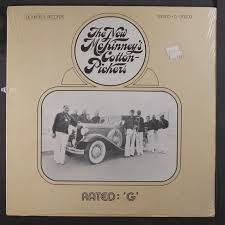
Daily Dose Of Jazz…
Alfred Winters was born March 24, 1931 and raised in New York City, New York. He completed his Bachelors and Masters degrees from Hofstra University and began working professionly since 1957.
He studied with the Metropolitan Opera Orchestra principal trombonist Roger Smith. He went on to play with Bobby Hackett, Gene Krupa, Phil Napolean, Wild Bill Davison, Benny Goodman. Recorded with numerous artists including Gene Krupa and Bobby Hackett.
Relocating in 1966 to the Detroit, Michigan area he performed and recorded with the Austin-Moro Big Band and the New Mckinney’s Cottonpickers as well as local artists like Tom Saunders.
He led his own band beginning in 1988 and performed at numerous jazz festivals including Newport Jazz Festival, Montreaux Jazz Festival and the Sacramento Jazz Jubilee.
More Posts: bandleader,history,instrumental,jazz,music,trombone

EKEP NKWELLE BAND
A rising master of her craft, vocalist Ekep Nkwelle entrances audiences with her strong lyrical presence and an uncanny connection to phrasing that’s at once grounded and ethereal. High-level musicality informs her storytelling. To Dizzy’s Club she brings her tight ensemble of acclaimed artists. Expect an evening of imaginative arrangements and compelling treatment of standard tunes.
More Posts: adventure,bass,club,drums,genius,jazz,music,percussion,piano,preserving,travel,trombone,vocal

Daily Dose Of Jazz…
John Maxwell Collie was born on February 21, 1931 in Melbourne, Australia. In 1946 he first heard professional jazz listening to Graham Bell’s lunchtime concerts at The New Theatre Melbourne. By 17 he was playing with a local band and shortly after leading it.
When he received the invitation by cable to take the trombone chair in the Melbourne New Orleans Jazz Band that was on tour in Europe, Max accepted and in 1962 arrived in England. He toured Europe until the band went back to Australia a year later, however, he decided to stay and joined the London City Stompers, becoming leader after a year. In 1966 he formed Max Collie’s Rhythm Aces and that band, notwithstanding the collapse of the UK jazz scene flourished.
The group released their first record in 1971 and in 1975 they won the World Championship of Jazz in traditional jazz against fourteen competing North American jazz bands in Indianapolis, Indiana.
He would go on to tour Sweden, Denmark, Finland, Norway and Japan and create a theater show. This show, Max Collie’s New Orleans Mardi Gras, which included Ken Colyer and Cy Laurie, turned out to be the most successful jazz show in British jazz history. Trombonist Max Collie died on January 6, 2018, at the age of 86.
More Posts: bandleader,history,instrumental,jazz,music,trombone

STEVE TURRE
Steve Turre Sextet with Andromeda Turre
One of the world’s preeminent jazz innovators, trombonist and seashellist Steve Turre has consistently won both the Readers’ and Critics’ polls in JazzTimes, Downbeat, and Jazziz for Best Trombone and for Best Miscellaneous Instrumentalist (shells). Turre was born to Mexican-American parents and grew up in the San Francisco Bay area where he absorbed daily doses of mariachi, blues and jazz. While attending Sacramento State University, he joined the Escovedo Brothers salsa band, which began his career-long involvement with that genre.
More Posts: adventure,club,genius,jazz,music,preserving,seashells,travel,trombone

Daily Dose Of Jazz…
Vernon Brown was born on January 6, 1907 in Venice, Illinois. He began his career as a jazz trombonist playing in St. Louis, Missouri with Frankie Trumbauer in 1925, and then moved through a variety of groups at the end of the 1920s and into the 1930s, including those of Jean Goldkette, Benny Meroff, and Mezz Mezzrow.
In 1937 Brown joined Benny Goodman’s orchestra, remaining there until 1940. While only soloing occasionally with Goodman, this association got him well known. The Forties saw him performing with Artie Shaw, Jan Savitt, Muggsy Spanier, and the Casa Loma Orchestra. In the 1940s, Brown switched focus from swing to Dixieland, playing often in studio recordings and working with Sidney Bechet.
Brown performed with Louis Armstrong and his All Stars for the ninth Cavalcade of Jazz concert in 1953 at Wrigley Field in Los Angeles, California. The concert also featured that day were Roy Brown and his Orchestra, Don Tosti and His Mexican Jazzmen, Earl Bostic, Nat “King” Cole, and Shorty Rogers and his Orchestra.
He led his own band in the Pacific Northwest in 1950 and did reunion tours with Goodman in that decade. He worked with Tony Parenti in 1963, and remained a studio musician into the early-1970s
Trombonist Vernon Brown, who later in his life lived in Roslyn Heights, New York, died in Los Angeles on May 18, 1979.
More Posts: bandleader,history,instrumental,jazz,music,trombone




